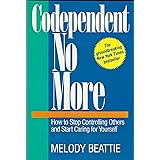As highlighted in the insightful discussion by Prof. Dr. Nevzat Tarhan, a critical disconnect often exists in society regarding the pervasive issue of internet addiction. Specifically, a concerningly low level of parental and community awareness about this modern challenge is frequently observed. This deficit in understanding commonly leads to numerous errors in navigating digital usage, often blurring the lines between beneficial engagement and detrimental patterns. The complexities of internet use, particularly within family environments, necessitate a deeper exploration to foster healthier digital habits and safeguard well-being.
The Alarming Reality of Internet Addiction: Beyond Casual Use
The prevalence of internet usage across various demographics has undeniably soared in recent years. For instance, data from a 2018 study conducted in Turkey indicated that approximately 80% of men were active internet users, with women following closely at around 65-70%. Computer usage, while slightly lower at 60% for men and 50% for women, still represents a significant portion of daily engagement. However, the sheer volume of usage does not inherently equate to addiction. It is the pattern and impact of this usage that truly signal a problem.
In contrast to mere high usage, internet addiction manifests when online activities begin to significantly impair an individual’s daily functioning. A particularly striking statistic emerged from a study by the Izmir National Education Directorate, revealing that internet addiction criteria were met by 12.6% of high school students. This figure implies that roughly one in eight high schoolers could be grappling with a genuine addiction, a number that cannot be disregarded. This statistic underscores the urgent need for increased awareness and proactive intervention strategies.
Decoding Risky, Harmful, and Dangerous Internet Usage Patterns
Prof. Dr. Tarhan succinctly categorized problematic internet use into risky, harmful, and dangerous forms. Understanding these distinctions is paramount for parents and educators attempting to intervene effectively.
-
Risky Usage: The Slippery Slope
Risky usage often involves patterns that, while not immediately causing severe harm, significantly increase the likelihood of negative consequences. For example, excessive screen time might not yet disrupt sleep, but it could lead to reduced physical activity or neglect of hobbies. This stage is frequently characterized by a growing reliance on the internet for entertainment or coping mechanisms, potentially diverting time and attention from real-world responsibilities or social interactions. Parents might observe their children spending increasing hours online, even if academic performance has not yet demonstrably suffered.
-
Harmful Usage: Visible Detriment
Harmful usage describes a stage where the individual is aware that their internet habits are causing damage, yet they continue the behavior. This harm can manifest in various ways, such as declining academic performance, strained family relationships due to neglect, or reduced engagement in extracurricular activities. For instance, a student might understand that their online gaming is impacting their grades, but the compulsion to continue playing outweighs the motivation to study. In these cases, the negative repercussions are becoming overtly apparent, requiring more direct and firm interventions. The individual may experience feelings of guilt or regret but struggles to alter their behavior independently.
-
Dangerous Usage: Immediate and Severe Consequences
The most severe category, dangerous usage, involves internet activity that poses immediate and significant threats to an individual’s safety or well-being. A classic example provided is using the internet while driving, which endangers both the user and others. Other dangerous uses could include engaging in illicit online activities, experiencing cyberbullying, or participating in risky online challenges. These situations demand immediate and forceful intervention, often involving professional help or legal action, given the potential for irreversible harm. Distinguishing between these levels of usage is crucial for appropriate parental response and support.
The Profound Impact on Daily Life and Well-being
When internet use evolves into a central interest, the repercussions can cascade throughout an individual’s life, significantly disrupting fundamental routines and relationships. The video highlights how internet addiction frequently leads to profound disturbances in sleep patterns. Instead of maintaining a healthy sleep schedule, individuals may stay online late into the night, resulting in chronic fatigue, poor concentration, and irritability. This exhaustion further exacerbates difficulties in school or work performance, creating a vicious cycle.
Moreover, eating disorders are often observed in individuals grappling with severe internet addiction. Meal times may be skipped or neglected in favor of online activity, leading to irregular eating habits, poor nutrition, and potential health complications. The structure and predictability of daily routines can disintegrate as internet use dominates priorities, making it challenging to maintain basic self-care. This shift indicates a significant deterioration in personal well-being, where the virtual world takes precedence over essential physiological and social needs.
Internet Addiction’s Ripple Effect: Family and Relationships
The insidious nature of internet addiction extends far beyond the individual, frequently casting a long shadow over family dynamics and marital stability. In stark contrast to the perception that internet use is a solitary activity, its excessive nature can severely erode interpersonal connections. Studies conducted in the United States, for example, have identified excessive internet usage as one of the top three reasons cited in divorce petitions. This statistic underscores the profound impact digital dependency can have on the most intimate of relationships.
Within a family, when one member becomes overly engrossed in online activities, others may feel neglected, unheard, or secondary. Communication channels can break down, as face-to-face interactions are replaced by solitary screen time. For children, a parent’s internet addiction can lead to emotional detachment, inconsistent parenting, and a lack of present engagement. Conversely, a child’s addiction can cause immense stress and helplessness for parents, often leading to arguments and a breakdown of trust within the household. The initial low awareness mentioned by Prof. Dr. Tarhan further complicates matters, as families may struggle to recognize the root cause of their mounting problems, attributing issues to general adolescent rebellion or marital discord rather than a genuine addiction.
Fostering Awareness and Proactive Strategies for Digital Wellness
Cultivating awareness is the foundational step in addressing internet addiction effectively. Understanding the signs and impacts of problematic internet use allows for timely intervention and support. For example, parents are encouraged to observe whether the internet has become the sole interest of their child or spouse. If all other hobbies, social interactions, and responsibilities have faded in favor of online engagement, this is a significant red flag that warrants attention.
Furthermore, an overly sensitive or “internet hostile” stance, as mentioned in the video, can be counterproductive. Instead, a balanced approach emphasizing digital literacy and responsible usage is more effective. This involves setting clear boundaries, establishing ‘tech-free’ zones or times within the home, and modeling healthy screen habits. Engaging in open, non-judgmental conversations about online activities can help bridge gaps in understanding and encourage healthier engagement. The goal is not to demonize the internet, but rather to integrate it into life in a way that supports, rather than detracts from, overall well-being and strong family connections. Professional guidance, when necessary, can also provide tailored strategies for managing and overcoming internet addiction, ensuring that individuals and families are equipped to navigate the digital world responsibly.
Continuing the Conversation: Your Questions on Parental Influence and Internet Addiction
What is internet addiction?
Internet addiction occurs when online activities begin to significantly impair a person’s daily functioning. It’s more than just spending a lot of time online; it’s about the negative impact that usage has on their life.
How common is internet addiction among high school students?
A study found that approximately 12.6% of high school students meet the criteria for internet addiction. This means about one in eight high schoolers could be struggling with a genuine addiction.
What are the different levels of problematic internet usage?
Problematic internet use is categorized into risky, harmful, and dangerous forms. Risky usage increases the chance of negative consequences, harmful usage causes visible damage, and dangerous usage poses immediate severe threats.
How does internet addiction affect a person’s daily life?
Internet addiction can profoundly disrupt daily life by causing sleep disturbances, leading to chronic fatigue, and affecting eating habits. It often makes it difficult to maintain basic self-care and routines.
What can parents do to address internet addiction?
Parents can foster awareness about the signs and impacts of problematic internet use, set clear digital boundaries, and model healthy screen habits. Engaging in open conversations and seeking professional help if needed are also important steps.











